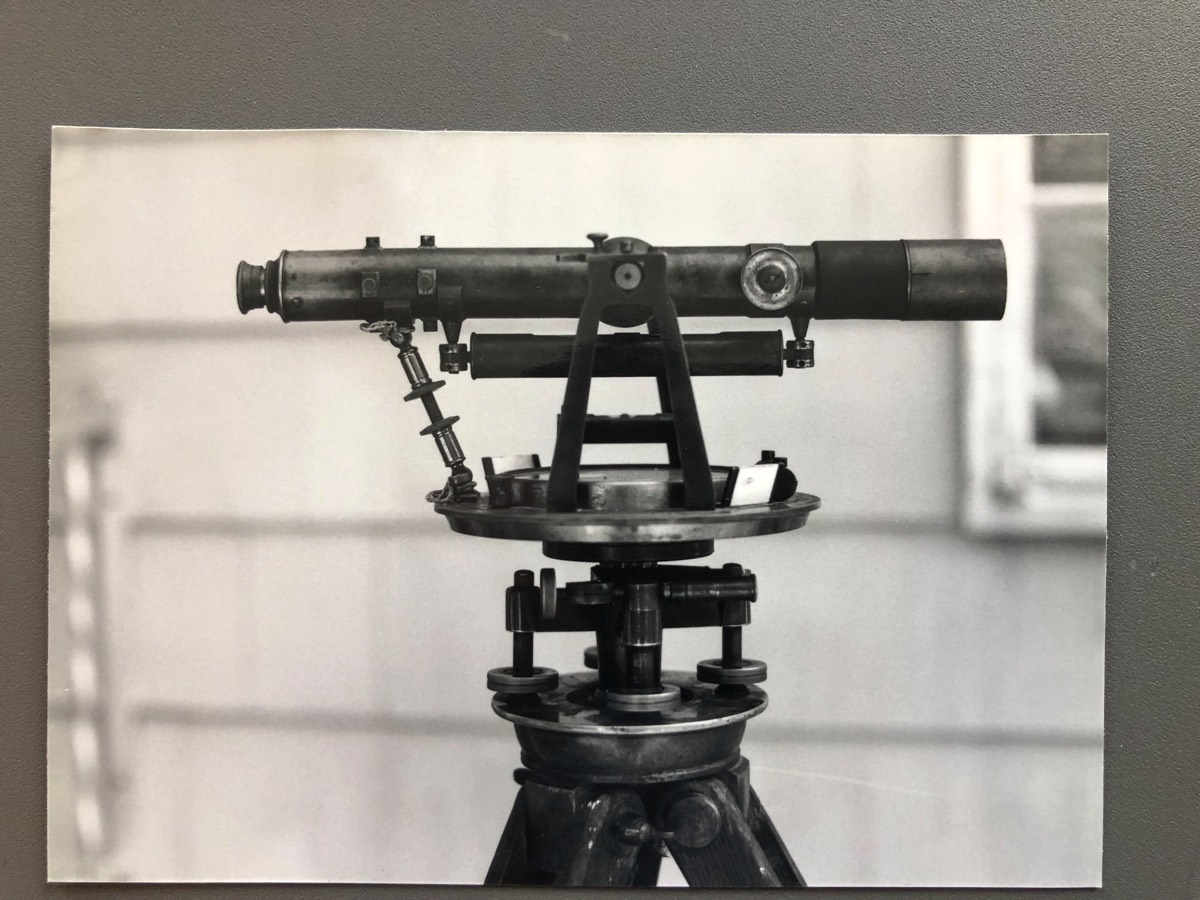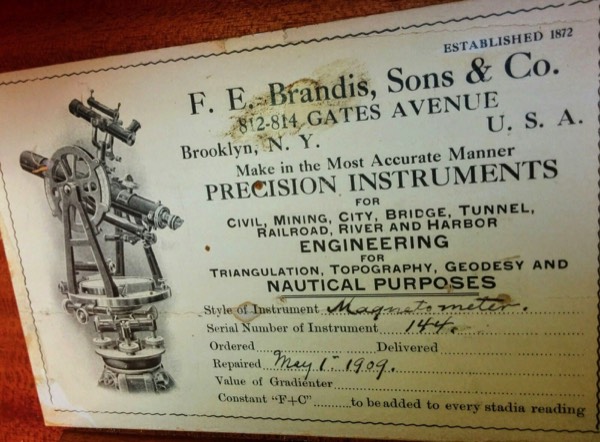
F. E. Brandis
History
F.E. Brandis
1845-1916
Frederick Ernest Brandis was born in Hildesheim, Germany in1845. He came to the United States in 1858 where he worked for Stackpole & Brother, maker of surveying and nautical instruments for a few years.
He opened his own instrument shop and is first listed in the New York City directory on May 1, 1872; the firm name was listed as Brandis, F. & Co. math. insts. He advertised as a maker of mathematical instruments, his advertisement of that date states “formerly with Stackpole & Brother”. By 1878 he had become a partner with Richard Teckritz, when the firm name was listed in the New York city directories in 1878 and 1879 as Brandis & Teckritz, math. insts.
After several years Frederick was again in business by himself. In the 1882 directory his is listed: Brandis, Frederick E. math. insts. He apparently made 3 circular dividing engines because in Catalog 17, issued in 1902, he states on page 30: “Description of our new graduating engine – when in 1884, we completed our second circular graduating machine with very gratifying results, we immediately undertook the construction of a third one, which is automatic in all its movements. We are proud to say that the results obtained have surpassed our most sanguine expectations, and we can now justly claim for our graduating engine superiority over those of most European competitors.”
An article in 1887 Annual Report of the Commissioners of the State Survey for New York reads as follows: “In the winter of 1882 a very satisfactory telescope was constructed by Brandis, of New York, for the No. 2 theodolite. This telescope has a clear aperture of 2 ½ inches and a focal length of 2 feet. It was used with an eyepiece of 40 diameters in 1883, and the results obtained, which will be referred to hereafter, indicate that the instrument is now capable of being employed upon triangulation of any magnitude and of the highest order of precision. This telescope must be lifted from the supports to reverse it, and its use is confined to the measurement of horizontal angles. The sunshade is made of hard rubber and weighs less than 3 ounces. A small blackened disc of wood is attached to the eyepiece end of the telescope in such a manner as to come opposite to the eye that is not in use. This has been found a means of considerable relief in prolonged observing.”
In 1890 he took his 2 sons as partners, moving their office and factory from 54 Fulton Street, NY to 754 Lexington Ave. in Brooklyn. Henry, who was then 24, and William aged 22; the new arrangement being reflected in the change of the firm name to F. E. Brandis, Sons & Co. Henry Brandis was born in New York City on February 25, 1866, he died in Brooklyn on December 1, 1959. William Brandis was born in Brooklyn on February 3, 1868 and died in a Long Island Hospital on November 26, 1936.
Frederick E. Brandis died in Brooklyn in 1916, the firm name changed again to Brandis & Sons, Inc. His 2 sons continued the business until 1922 when the Pioneer Instrument Company purchased control of the Brandis firm. The firm was later acquired by the Bendix Aviation Corporation in 1928, the manufacture of Brandis instruments ceased in 1932. In 1938 Mr. Richard D. Leaf who had been a sales agent, purchased the remaining stock and firm name. The firm continued to operate to recent times as Brandis & Sons, Inc., located at 62 Clinton Ave., Pleasantville, NY 10570.
Brandis Sextants:
Brandis was one of several manufacturers who produced sextants for the U.S. Navy during and immediately following WWI. In the spring of 1919 the Navy’s Bureau of Aeronautics was preparing to attempt the first aerial crossing of the North Atlantic with three giant Navy Curtiss (NC) flying boats. The problem of celestial navigation during the long flight was addressed by another student of P.V.H. Weems, a young Lieutenant by the name of Richard E. Byrd. Byrd successfully modified several standard Brandis sextants with a bubble device.
Byrd patented his modification and, in 1921, by then Lt. Comm. Byrd negotiated a royalties contract with Brandis for factory-produced Byrd Sextants. The following year, controlling interest in Brandis was purchased by the Pioneer Instrument Company which, in 1928, became a division of Bendix Aviation Corp. Production of Brandis sextants ceased in 1932 by which time Pioneer had developed the aeronautical bubble octant Noonan referred to in his letter to Weems. Obsolete Brandis instruments were sold as surplus to retailers like Negus Instruments of New York. It is, therefore, hardly surprising that Noonan’s back-up “preventer” in the mid-1930s would be a Brandis, and it is the Brandis brand that points toward the box found by Gallagher.
Each Brandis Navy Surveying Sextant carried a chronological “maker’s number” etched in tiny numbers on the arc of the instrument and also stenciled on the inside of the box. As sextants entered the Navy inventory they were checked for accuracy by the Naval Observatory in Washington, DC where they received an N.O. number hand-etched in large numbers on the arc and, in some cases, also stamped into the wood of the box. So Navy-surplus Brandis sextants had two numbers – a maker’s number and a Naval Observatory number. More significantly, Brandis sextant boxes were marked with the stenciled maker’s number and, at least in some cases, a stamped-in N.O. number.
Brandis sextants were usually painted with black enamel. But what of the numbers? Does 3500 make sense as a Brandis maker’s number and could 1542 be a Naval Observatory number? TIGHAR researchers have tracked down records for eleven Brandis Navy Surveying Sextants and donated the funds for TIGHAR to acquire three examples.
Let’s formulate a hypothesis that the 3500 Gallagher reported as being stenciled on the box was a Brandis maker’s number and that the 1542 otherwise marked on the box was a Naval Observatory number. Now let’s test the hypothesis by seeing whether those numbers fit in the documented sequence, they do.
Catalogues

An 1881 instrument catalogue by Brandis, who made some nice instruments:
Labels






Additional Pictures
© 2020 Russ Uzes/Contact Me